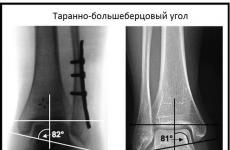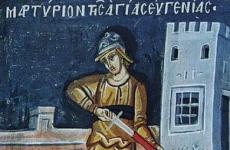Stieg Larsson continued. Stieg Larsson Books. Millennium Trilogy. Is it worth reading the sequels to Millennium?
A sequel to Swedish writer Stieg Larsson's Millennium trilogy could be published, Larsson's friend and fellow journalist Kurdo Baxi said during the Edinburgh Book Festival. Baxi is confident that the manuscript is 70% complete and could also become the basis for a “wonderful Hollywood film.” True, he believes that it is not worth completing the book - the hired “literary blacks” will not be able to repeat Larsson’s style.
The 260-page draft tells the story of Camilla, the twin sister of the trilogy.
This character is mentioned briefly in the first three books, and in the fourth book Larsson decided to bring her to the fore. According to Baksi, Larsson planned to write ten novels in the series in total, and the unfinished volume would be the fifth chronologically.
With his speech, Kurdo Baxi refuted statements made in early August by Larsson's common-law wife, Eva Gabrielsson, who believes that the manuscript is unsuitable for publication because it is only 30% ready and represents a set of unrelated scenes. “Stig wrote spontaneously, in separate pieces, which he then put together. You can’t call what happened a novel,” she said.
According to Gabrielsson, the draft is about 200 pages long, which is just the beginning of the novel.
According to Larsson's heirs, there are at least three more unfinished drafts: the fourth (or fifth) book, which Gabrielsson and Baksi are arguing about, as well as either two synopses or two small manuscripts of two more novels in the series. Now Larsson’s inheritance is managed by the writer’s brother and father, who - it seems - are not going to release sequels to “Millennium” in any form.
As for Kurdo Baxi and Eva Gabrielsson, both of them knew Larsson well, but it is unclear which of them was more familiar with the writer’s latest works.
The writer lived with Gabrielsson for more than 30 years, they were engaged in research and social work together. She wrote a book of memoirs, “Millennium, Stig and Me” (published in Russian in the summer of 2011), in which she expresses her point of view on the possibility of publishing the fourth volume. In addition, she has been trying for a long time to defend her right to the writer’s legacy; she was even offered to join the board of the Larsson Foundation, but she refused. In January of this year, she expressed her readiness to complete the fourth book, although she had previously stated that she would not like to see it published.
Baksi and Larsson knew each other for 12 years, worked together in journalism, in the late 90s they merged their two publications and saw each other - according to Baksi - almost every day. Baksi also published a memoir of the writer under the title Stieg Larsson, but, unlike Gabrielsson, he does not claim the copyright for Millennium.
The trilogy itself turned out to be very popular. In 2009, all three books were filmed in the writer’s homeland of Sweden; the leading actors Mikael Nykvist and Noomi Rapace as a result received a ticket to Hollywood (Rapace is currently filming the sequel to Guy Ritchie's "Prometheus", and Nykvist is filming the fourth "Mission: Impossible"). In addition, another “The Girl with the Dragon Tattoo” starring Rooney Mara is coming out this December.
For forty years, the mystery of the disappearance of a young relative has haunted the aging industrial magnate, and now he makes the last attempt in his life - he entrusts the search to journalist Mikael Blomkvist. He takes on a hopeless case more in order to escape from his own troubles, but soon realizes: the problem is even more complicated than it seems at first glance. How is the long-standing incident on the island connected with several murders of women that happened over the years in different parts of Sweden? What do quotes from the Third Book of Moses have to do with it?
2 Stieg Larsson
The girl who played with fire
|
|
|
Late in the evening, a journalist and his girlfriend were shot dead in their apartment - people who were studying channels for the supply of sex slaves from Eastern Europe to Sweden. Representatives of government structures have been spotted among the clients of the low-profile business. It seems obvious which circles benefited from the deaths of these two. Mikael Blomkvist begins his own investigation into the deaths of his colleagues and friends and suddenly learns that his old friend Lisbeth Salander, the strangest girl in the world, is suspected of murder, prone to playing with fire - for example, pouring gasoline on it
3 Stieg Larsson
The girl who blew up castles in the air
|
|
|
Lisbeth Salander decides to take revenge on her enemies. Not only the criminal elements who want her dead, but also the government that almost ruined her life a few years ago. She also needs to escape from the hospital, where she is being kept under guard, considered a dangerous psychopath, and ensure that her name disappears from the list of murder suspects
The sequels to the Millennium trilogy were expected by the reading public and were doomed to success. They were published posthumously.
4 Stig Larsson,David Lagercrantz
The girl who got stuck in the web
|
|
|
In the book “The Girl Who Got Caught in the Web,” new times have come in the lives of Lisbeth Salander and Mikael Blomkvist. Each of the heroes is busy with their own problems. Lisbeth declared war on her father's criminal empire, seeking to destroy even the smallest remnants of it. Mikael is going through a difficult period - critics and colleagues harassed him, reproaching him for losing his professionalism, and his Millennium magazine is facing a “hostile takeover” by a large media concern
Millennium Trilogy received wide worldwide fame. The author of popular detective novels is a Swedish writer Stieg Larsson. The books begin with a detective story. It is the Girl with the Dragon Tattoo who becomes the main heroine of the Millennium detective series.
The name of the main character of the works is Lisbeth Salander. This is an extraordinary personality with a difficult fate, outwardly asocial, and possessing a lot of innate abilities. The successful choice of the main character predetermined the success of the first novel written by Stieg Larsson. The continuation books of the Millennium trilogy were highly anticipated by the reading public and were doomed to success. They were published posthumously. First book The Girl with the Dragon Tattoo in 2005. Second - The girl who played with fire comes out after the first one in 2006. Third - The girl who blew up castles in the air also a year later in 2007. The novels were written and completed by the writer himself. But there remained an unfinished manuscript. Based on her materials, journalist David Lagercrantz wrote a continuation book of the Millennium trilogy - The girl who got stuck in the web. The novel was published in 2015, once again raising a wave of reader interest in the works of Stieg Larsson. Perhaps the returned popularity will encourage Lagercrantz to continue the story of Lisbeth with new works.
Millennium Trilogy quickly gained worldwide fame and gained millions of fans around the world. The growing popularity of Stieg Larsson's works has not gone unnoticed by filmmakers. Lisbeth Salander became the heroine of Swedish and American film adaptations. For my taste, the films turned out weaker than the works written by Stieg Larsson. The books are interesting, as mentioned above, because of the unusual, complex, expressive main character Lisbeth Salander. The directors chose faint shadows of the character conceived by the author for this role. In terms of energy and image, the vocalist of the Russian group Slot, Daria Stavrovich, is much closer to the image of Lisbeth. I think that filmmakers should invite her to play the role of Salander in the next film adaptation of stories about the heroine of the series.
Stieg Larsson was a public figure. This is reflected in the author's coverage of social problems in Sweden, mostly related to women. The Girl with the Dragon Tattoo is a title given by publishers to increase box office revenue. The author called the first novel Män som hatar kvinnor, literally translated from Swedish as Men who hate women. The title is the leitmotif for all works in the cycle. You read about the cruel, perverted violence of women, the lack of rights of people recognized as asocial, and you think that this is the situation in socially oriented, prosperous Sweden. What can we say about other countries? I can’t help but remember One Flew Over the Cuckoo’s Nest by Ken Kesey. More than 40 years have passed, but the situation with individual rights or lack of rights has changed little. A person who falls out of the system automatically becomes its enemy.
A little about the features of the works that Stieg Larsson wrote. The books belong to the detective genre. As the story progresses, the second hero of the series, economic journalist Mikael Blomkvist, conducts his own investigations that are not related to official police actions. The intrigues conceived by the author are quite interesting, but the format he chose for presenting events is somewhat heavy for the detective genre. The writer abuses excessive attention to detail, voluminous digressions and repetitions of what was previously said. The detective line is blurred by an abundant influx of words, loses the intensity of the reader's interest, and complicates the perception of the narrative. Novels are read more by inertia, following the fate of the main character. But you don’t feel much pleasure from reading. It's more like working and fulfilling reading duties. Nevertheless, something catches the millions of readers and ties them to the works of Stieg Larsson. I'm not an exception. Otherwise, there would be no exceptional popularity of this detective series and prestigious literary awards.
Stieg Larsson's books were published in chronological order of events. Below are my reviews of each of them.
Stig Larson Books in order. Millennium Trilogy
- 2005 - The Girl with the Dragon Tattoo (Man som hatar kvinnor - Men who hate women);
- 2006 - The Girl Who Played with Fire (Flickan som lekte med elden);
- 2007 - The girl who blew up castles in the air (Luftslottet som sprangdes - The castle in the air that was blown up).
David Lagerkrantz. Sequel to Millennium
- 2015 - The Girl Who Got Stuck in the Web (Det som inte dodar oss).
Stieg Larsson and his legacy
© Britt-Marie Trensmar
Stieg Larsson began the Millennium trilogy in the summer of 2002. He was 48 and had never written a line of prose before. A well-known Swedish journalist, Larsson spent his entire life researching right-wing ideologies and extremist organizations, and writing novels fit so poorly with his figure that even his friends treated the idea of writing as a joke. Mikael Ekman, Larsson's colleague, recalled how in 2001 they drank whiskey after work and fantasized about what they would do in retirement. “I’ll write a couple of books and become a millionaire,” Larsson said. Ekman laughed at him. Larsson's former boss, Kurdo Baxi, reacted similarly when Larsson admitted he was writing a novel and asked to see the manuscript: "I thought he was joking."
But Larsson wasn't joking. In two years, he composed an entire trilogy and was already preparing it for publication, but on the morning of November 9, 2004, he suddenly died of a heart attack while climbing the stairs to the seventh floor to his office. Six months later, the first novel appeared in bookstores and immediately became a bestseller in Sweden, and five years later - throughout the world.
It was this unusual trajectory of the writer’s life (and death) that made the books an early success. It's no joke - he wrote three excellent detective stories from scratch and died on the doorstep of fame: a marketer's dream. But the main reason for the popularity of the Millennium trilogy is, of course, the characters.
Mikael Blomkvist
In the Swedish adaptation of Millennium, the central male role was played by Mikael Nykvist (villain from the first John Wick).
© Niels Arden Oplev
1 of 2In the American version - agent 007 Daniel Craig
2 of 2When creating his heroes, Larsson deliberately went against the canons. Noir is a well-established genre: at the center of the story is an invariably gloomy, depressed alcoholic misanthrope like Harry Hole from , who solves crimes in between trips to his favorite bar and recovering from heavy drinking. Mikael Blomkvist, the founder of the Millennium magazine (hence the name of the series), in this sense the character is the opposite: an absolutely healthy, moderately drinking truth-seeking journalist with a crystal clear reputation; Even his physical attractiveness is played by Larsson as a mockery of the toxic masculinity characteristic of the genre. Blomkvist is a hit with women, but in the books his affairs always look like he's being seduced into bed, which is quite clever compared to the ossified notions of irresistible heroes from noir novels.
Lisbeth Salander
The role of a girl with a dragon tattoo and on a motorcycle launched the Hollywood career of Noomi Rapace (“Prometheus”, “Common Fund”)
© Niels Arden Oplev
1 of 2Lisbeth Salander, like Blomkvist, is a shapeshifter. With her, Larsson did something even more radical: he took all the known stereotypes about female heroines and turned them inside out. The result was an aggressive hacker girl with a keen sense of justice and an extremely high IQ, dressed like a punk and riding around the city on a motorcycle.
Larsson tried to achieve maximum contrast between the characters, and he succeeded: if Blomkvist is an opponent of violence, who is always looking for a way to comply with protocols, then Lisbeth, on the contrary, behaves like an avenger from comics - she personally punishes those whom the law does not reach. In addition, Larsson’s protagonists are equal in rights: here, too, the author abandoned the standard detective trope, without dividing them into Holmes and Watson - the brain and his assistant. It was this novelty - an attempt to play with tired clichés - as well as the chemistry between the characters that made the books such a success all over the world.
Family thought
The family is perhaps the main unit of measurement in Scandinavian literature. All sagas begin with long lists of family ties - who gave birth to whom and from whom. And secrets in Swedish thrillers also most often revolve around skeletons peeking out of closets. For example, many novels by Håkan Nesser or Anna Janson are written according to this formula: the tragedies and crimes in them are the result of unsettled life and hidden resentment rather than malicious intent. Just remember “The Man Without a Dog,” where the plot centers on a family celebration.
Larsson is no exception: the theme of family is very important to him, but he plays it in his own way. If you cut off the unnecessary stuff, then “Millennium” is one big journey of Lisbeth Salander in search of a real family, that is, people who will accept and love her for who she is. Architecturally, all the plots in the trilogy are structured so that towards the end the heroine frees herself from all tyrants and finds peace. And the main paradox is that Lisbeth's oppressors in this family saga are her blood relatives, her father and half-brother, as well as her court-appointed guardian. Larsson's novels are so well thought out that even if the reader does not see this semantic inversion, he still subconsciously feels the message: family is not at all an entry on a birth certificate, blood ties are a fiction, and a branch can be broken off from the family tree at any time and find a new family. This is exactly what Lisbeth does, and therefore the very last scene, when she opens the door for Blomkvist, that is, she finally lets him into her life, is perhaps the ideal conclusion to her story.
Who is Eva Gabrielsson

© WANDYCZ Kasia / Gettyimages.ru
Larsson himself, like Salander, also, in a sense, had two families - relatives and a wife. Until he was eight years old, he lived with his grandmother in the village, then he moved to Stockholm, to live with his father and brother, but at sixteen he left home. And at eighteen he found a second family - he met the architect Eva Gabrielsson. They worked and traveled together, and in 1981 they went to Grenada, where they studied the revolutionary experience of the newly liberated republic. Gabrielsson played such an important role in Larsson's life that when the Millennium trilogy conquered the world and journalists began to delve into the author's biography, a theory emerged that Eva had a hand in the books. This is understandable - even his colleagues doubted Larsson’s literary talents until the very end, while Gabrielsson, on the contrary, has always been known not only as an architect: in her youth she translated Philip K. Dick into Swedish.
What happened after Larsson's death?
Unfortunately, Larsson did not leave a will, and his marriage with Gabrielsson was not officially registered. The writer was afraid that if they had common property, his social activities could endanger her life. Therefore, after his death, all rights to the books legally went to his father and brother.
Gabrielsson tried to sue, she still had an unfinished fourth novel about Salander - Blomkvist in her hands, and she was ready to finish it, but the court sided with the heirs and forbade her to use the names of the characters. And already in December 2013, Larsson’s father announced that journalist-biographer David Lagercrantz would continue the series.
Are the Millennium sequels worth reading?

David Lagercrantz
Developing a successful franchise after the death of the author is quite common practice. For example, Sebastian Faulks, among others, and Anthony Horowitz brought Sherlock Holmes to life. But there are two nuances here.
Firstly, Faulks and Horowitz are accomplished writers and have at least a grasp of the basics of the craft, while Lagercrantz is a journalist whose CV includes semi-biographical novels about Alan Turing, the conquest of Everest and a memoir compiled from 100 hours of recorded interviews with a footballer.
Secondly, the sequel to Millennium has nothing to do with Larsson's original plan. Eva Gabrielsson never handed over the unfinished draft to the heirs, and Lagercrantz had to write a new story from scratch, which is a big problem because he obviously has no idea how a good thriller plot works.
What Afisha wrote about Millennium and its sequels
"The Girl with the Dragon Tattoo"
"The Girl Who Played with Fire"
"The Girl Who Blew Up Castles in the Air"
"The Girl Who Got Stuck in the Web"
Lev Danilkin: “We’ll do without hallelujah, but if your quota for detective stories is one per year, then let it be Larsson”
Lev Danilkin: “And the first book was very exciting, but the second is much more exciting: like Follett’s “Pillars of the Earth,” like “Smilla,” like “The Count of Monte Cristo”; to such an extent that you can go into “read-only” mode for a couple of days, and do everything else on autopilot.”
Lev Danilkin: “This, of course, is not a detective story at all, or even a political conspiracy thriller, or even an office series about relationships; something much more significant. A fictionalized guide to the Swedish constitution. Essay on a model of interaction between private individuals and government agencies"
Lev Danilkin: “The novel is teeming with Yuri, Ivan and Vladimir - State Duma deputies, pimps, killers, hackers; Nikita Mikhalkov is even mentioned here. One can only guess how Larsson himself would have reacted to the fact that his books turned into weapons of the Cold War.”
To be fair, Larsson was also a journalist and also started from scratch. His books have a lot of flaws - they are redundant, wordy, they have problems with rhythm - but the thing is that Larsson, in any case, knew how to create charismatic characters and build up the atmosphere. Lagercrantz is incapable of this: while working on the sequel, he simply pulled plot lines from the original trilogy. Remember how in the second book of Millennium, Blomkvist realized that Lisbeth had hacked his laptop and communicated with her through a text file on his desktop? The same thing happens at Lagercrantz.
“The Girl Who Got Caught in the Web” is not a continuation of the series: it is the plots of the first three books, crushed and ground in a blender, sterilized and diluted with water. Almost all the scenes in Lagercrantz's novels are conversations between two people in a room or on the phone, and on the phone they usually retell to each other what happened in the previous chapter. There is not a single attempt to build an effective scene: the whole book looks like a collection of interviews - one long dialogue follows another.
The original trilogy, among other things, was also distinguished by its extreme cruelty: over the course of three novels, Lisbeth managed to pour gasoline on her father, set him on fire and hit him with an axe, spent 381 days in an isolation ward in a psychiatric hospital and nailed her brother to the floor; she was raped, beaten, shot in the head, and once even buried alive; she chased a maniac-killer on a motorcycle, tattooed the word “pig” on the rapist’s chest and single-handedly swept away a crowd of bikers. Larsson's books in this sense are an example of a Scandinavian detective story; injuries and cruelty in them are part of everyday life: in one scene the heroine is having breakfast, and in the next she already has a concussion and a couple of penetrating wounds - and this is normal.
Not Lagercrantz. The new novel has one broken jaw at the beginning, a frail old man killed by an overdose in the middle, and then a vague fuss about a “mysterious secret experiment on orphans,” which is presented without irony and is similar to the plot of a film stolen from Uwe Boll. Lagercrantz simply doesn't have the spirit, the imagination, or the instincts to pull off the heat - and compared to the madness that was going on in the original author's pages, it's just ridiculous.
Larsson, like an Old Testament god, forced his heroes to undergo the most terrible tests - Lagercrantz seems to be afraid of harming them and, if he punishes the character, it’s as if for fun: Lisbeth is always wounded not seriously - so that after twenty minutes she can gallop through the fjords like an antelope and fire a pistol with one hundred percent accuracy. In “The Girl Who Searched for Someone Else’s Shadow” the reader meets Salander in prison - and here it would be possible to thicken the colors and unwind the legal line, force all the heroes to fight for life, but no: Lisbeth leaves prison after two months without a single scratch. And this prison is more like a pleasant Swedish hotel with a garden in the courtyard, a ceramics circle and cheesecakes with lingonberry sauce for lunch. If this continues, then in the third book Lagercrantz will put Lisbeth in a corner and forbid her to watch TV - he is obviously not capable of great cruelty towards the characters.
Writing a sequel to a well-known series is, in principle, a very risky undertaking; the successor, one way or another, must compete with the original source, try to get out of its shadow, and say something of his own. Lagercrantz has no such goal: both of his “Girls” are novels that scream about their secondary nature. Their author does not even try to flirt with the genre and somehow express himself: on the contrary, he is constantly looking for a way to write “like Larsson”, to hide behind him - and even fails in this. The sequels of "Millennium" do not even reach the level of fan fiction: the latter may be awkward and crooked, but at least they are always written with love - for the idol writer, the characters, the atmosphere of the original. Lagercrantz's books are written with a love of money.









